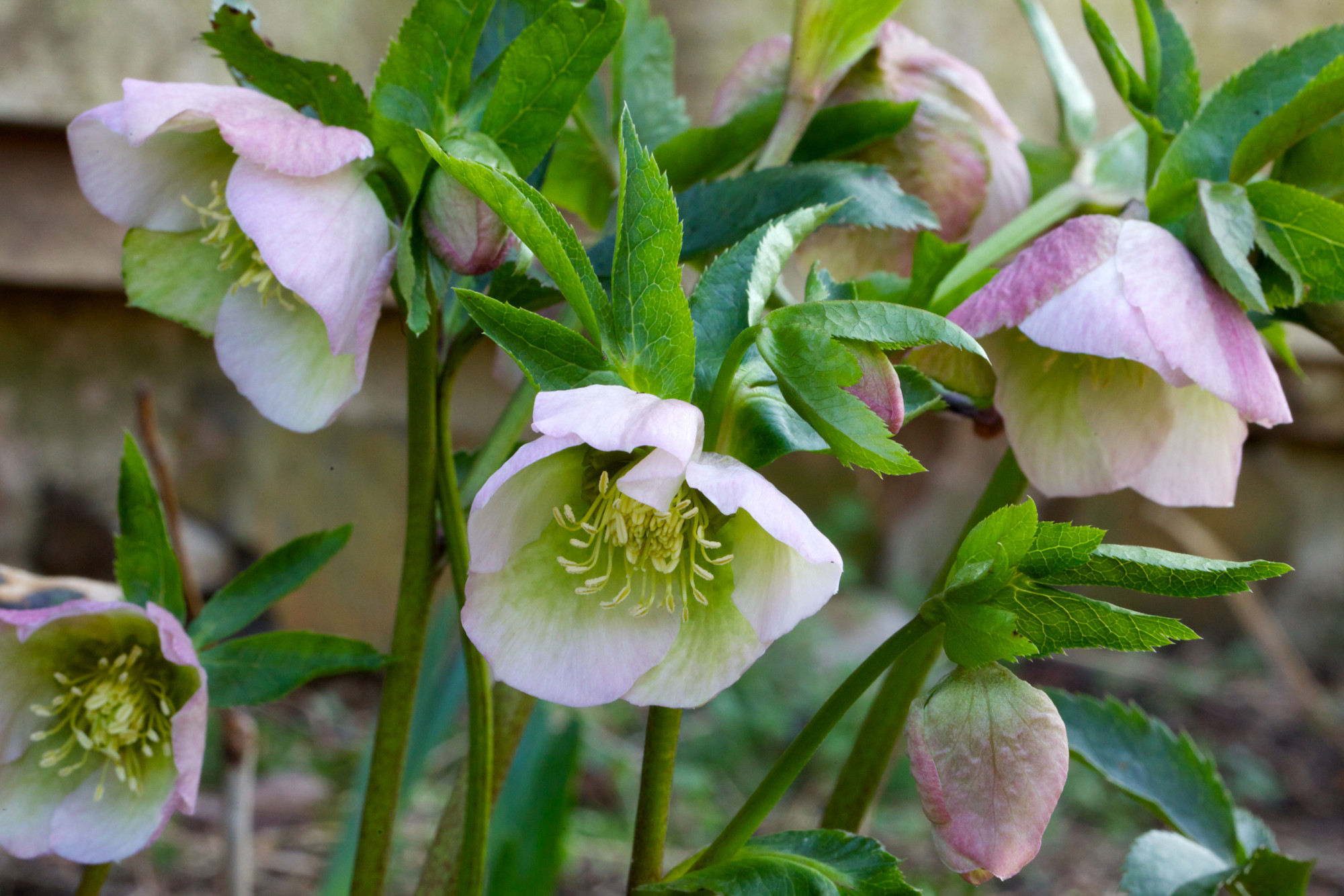
On the first day of spring—the vernal equinox—day and night are 12 hours long. Spring officially began at 1:14 am this morning. It’s HERE! Earthworms wiggle, birds sing, and buds and bulbs are beginning to sprout everywhere. One plant in rare form right now is Helleborus. Their deep green leaves and unusually shaped flowers give us a gorgeous show in many colors. Hellebores went “mainstream” in 2005 when The Perennial Plant Association named it “Perennial Plant of the Year”. Sold as a shade plant, they actually like dappled shade and even thrive in a little sun.
Temperatures are expected to climb this week and there are many garden tasks. Slugs are awakening so get out the organic slug bait around your Hostas and Irises. The new ferrous-based pellets or Diatomaceous Earth work well.
Other chores include:
- Cut back grasses and perennials and clear dead foliage. Be careful not to step on the upcoming spring bulbs!
- Overgrown clumps of Snowdrops can be lifted and divided.
- Add organic compost amendment to your vegetable garden and perennial beds if you have not done so already.
- Weeds are already sprouting so NOW is the time to remove them before mulching. Do NOT throw any weeds with seeds into the compost bin or you will weed them again when you use the compost!
- Take a soil test for problem areas before the labs get busy if you have not done this for 3 years.
- Apply a low-nitrogen, slow release fertilizer on spring bulbs as they emerge for a better display.
- Plan your vegetable crop rotation to reduce pests and diseases.
- Sow herbs outside such as Oregano, Parsley, Marjoram, Chives and Dill.
- Sow cool crops seeds and sets now if the soil is not too wet or cold. The easiest are lettuces, spinach, Swiss Chard, radishes, and onion sets. Other “cole” crops include early peas, leeks, broccoli, cauliflower and beets.
- Make arrangements to have mower blades and pruning shears sharpened and equipment sent in for a spring tune up
- Look for winter mold and trouble areas in the lawn and schedule fertilization applications
- Summer and fall blooming shrubs should be pruned by clearing out old or diseased growth.
- Look up into your shade trees for any hazardous dead limbs or storm damage and have them removed.
- Tree fertilization should be scheduled to enhance tree vigor and address the drought of 2010 and storm damage of 2011. This helps grow new roots and prevent diseases.
This week will be a great time to take a walk at the Leonard J. Buck Garden, 11 Layton Road in Far Hills. Hours are M-F 10-4 pm. On April 1st, they will be open on weekends as well: Saturday 10-5 pm and Sunday 12-5 pm. There is a lovely spot on the deck by the Visitor’s Center to have lunch with benches placed throughout the trails for quiet reflection.
Leonard Buck, a geologist and trustee at the New York Botanical Gardens met architect, Zenon Schrieber in the late 30’s. Together they created by hand every garden space by eye and proportion without any drawings. This garden is part of the Somerset County Park Commission. The suggested donation is $1per child and $3 per adult.
Enjoy the weather and let us know what you are seeing! Send us your thoughts and comments.

